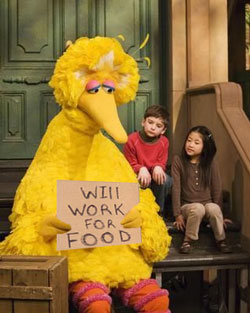This past Friday marked the one-year anniversary of Russia’s invasion of Ukraine. So far, the conflict has been defined by Ukrainian persistence, an international grain and energy crisis, alongside claims made by the West accusing Russia of numerous war crimes including mass graves of civilians discovered in Bucha earlier last spring.
Outside of the war itself, there has also been an active conflict in the information space between Western powers and Russia, with Russia consistently saber-rattling and even threatening to bring the world to nuclear brinkmanship over continued Western support for Ukraine.
A junior psychology student commented how he “wishes the war comes to an end soon…the threat of nuclear war and wider escalation hanging over us causes unnecessary and additional anxiety that, truthfully, nobody needs.”
For the most part, the West has acted as a unified body. However, disputes over what weapons should be supplied and when Ukraine should seek peace has caused a minor rift among the bloc.
During the 2014 Ukrainian Euromaidan protests, Russian forces invaded and seized control of Crimea, while Russian military and separatist forces launched a campaign to seize control of Donetsk and Luhansk oblasts. The two oblasts make up a predominantly Russian speaking area and collectively are referred to as the Donbas. In February of 2022, Russia launched a full-scale invasion of Ukraine, expanding the scope of the conflict from the Donbas and Crimea to include the entire country.
In the early days of the invasion, Ukrainian forces won a decisive battle for Kyiv’s Gostomel Airport, preventing Russian airborne and special forces from controlling an airstrip near Ukraine’s capital city. A year later, the result of this battle is seen as a watershed moment and a symbol of Ukraine’s ability to resist the Russian invasion.
Russian forces invaded Ukraine from three places. In the south, they advanced into the country from Crimea, seizing control of Ukraine’s Black Sea Coast and the port city of Mariupol. The Russian military initially captured the namesake provincial capital of Kherson Oblast, but Ukrainian forces re-captured the city in a counteroffensive in November. Although Russian forces originally intended to advance towards the major port of Odessa, Ukrainian forces halted their advance, and the city has been mostly spared from conflict since then.
In the north, Russian forces invaded from Belarus. This portion of the invasion was focused on the capture of Kyiv, as evidenced by the battle at Gostomel. These forces initially made significant advances, leading to concerns of a potential encirclement of Kyiv. An extensive Russian convoy was spotted in occupied suburbs of the city, but no meaningful action materialized from this force. After Ukrainian counter-offensive operations, the Russian military withdrew “in a gesture of goodwill” from the northern and capital region of Ukraine in April.
In the East, the Russian military has focused on seizing the rest of the Donbas region from Ukraine. It is here where the Russian military has perhaps seen the most success, capturing important regional cities such as Severodonetsk, but stopping short of other cities such as Kramatorsk.
Russian forces were denied occupation of the highly strategic city of Kharkiv by Ukrainian defenders, and a counteroffensive in the Kharkiv oblast this past September all but froze the Kharkiv front. Ukrainian forces have liberated key settlements such as Lyman, but are currently facing a grueling battle in the city of Bakhmut.
Evidence of Russian war crimes is also present on this front, as seen through a Russian missile strike on the civilian train station in Kramatorsk. The missile strike killed 60 people, wounded over a hundred more, and follows an alarming trend of Russian forces targeting Ukrainian civilian infrastructure.
In November, a presumed Ukrainian anti-air missile fell on the territory of Poland, a member of NATO and prominent backer of Ukraine. Why the missile fell on Polish territory is under investigation, but it is assumed that it was being used to intercept a Russian missile when it went off course and struck a farm in Poland, killing two. The incident led to an international crisis, with hawks calling for the enactment of NATO’s Article Five, but the body withheld from making such a decision, instead employing its more diplomatic Article Four.
The war has also been used as a proxy by numerous parties. Ties are complicated; the West backs and arms Ukraine, while Russia is backed by select allies, such as Iran, who supplies Russia with Shahed drones that have since been deployed on Ukrainian civilian critical infrastructure. Reports in the media suggest that the People’s Republic of China is considering providing lethal aid for Russia, but this remains unconfirmed. The proliferation of weapon’s platforms is of great concern to the international community.
However, neither side seems interested in reigning in the conflict for the time being.
A senior political science student at Monmouth said, “The war is an unfortunate result of international mishaps over the past 20 years. Neither side took the time to understand each other’s concerns and interests, and rather established a system of mistrust that has only bred conflict around the world since then.”


